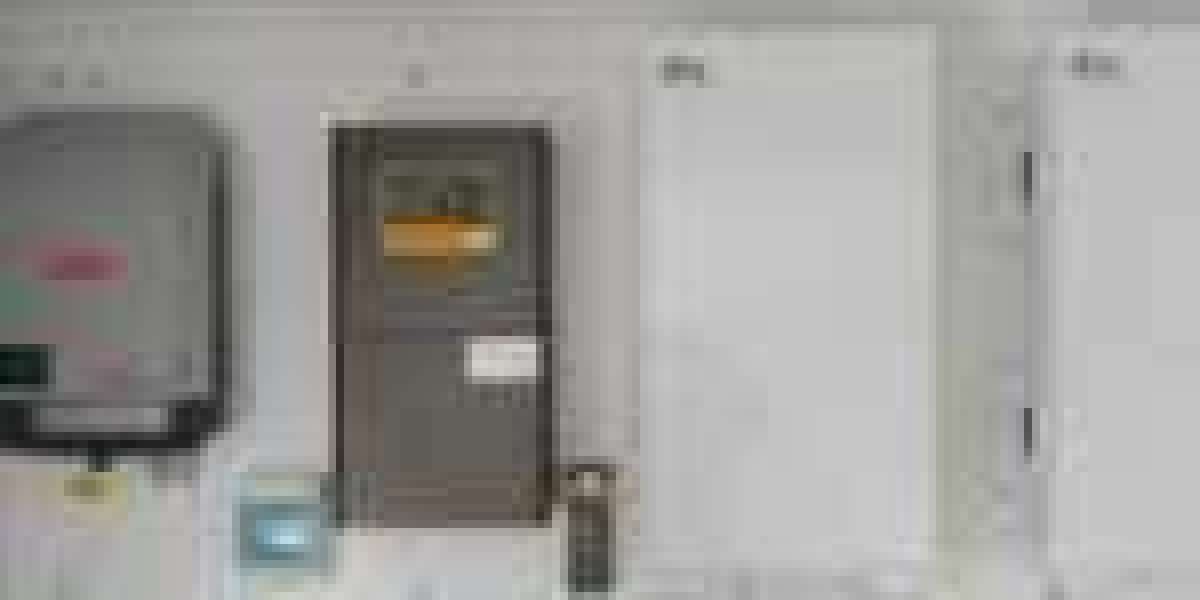Are you tired of unreliable power sources and constant electricity bills? Imagine harnessing the sun’s energy to keep your home running smoothly, even when the grid fails. That’s where a Stand Alone Inverter comes into play. These ingenious devices convert solar energy into usable power for your appliances and tools, making them essential for anyone looking to embrace renewable energy solutions.
Whether you’re off-grid, living in a cabin, or just seeking backup power during outages, understanding which standalone solar inverter suits your needs can make all the difference. With so many options available today, it can feel overwhelming at times. But fear not! We’re here to guide you through everything you need to know about choosing the right model that perfectly aligns with your requirements and lifestyle. Let’s dive in!
Understanding the Different Types of Inverters
Inverters convert DC (direct current) power from solar panels into AC (alternating current) used by household appliances. Understanding the different types of inverters is essential for anyone considering a standalone solar PV system.
There are primarily two categories: string inverters and microinverters. String inverters connect multiple solar panels, making them an economical choice for larger systems. However, their performance can be affected if one panel is shaded or dirty.
Microinverters, on the other hand, attach directly to each panel. They optimize energy output individually, providing better Efficiency, especially when some panels receive less sunlight than others. This makes them ideal for complex roof layouts or partial shading situations.
Additionally, hybrid inverters combine features of both types and can seamlessly integrate battery storage solutions. Each type has unique advantages based on your specific needs and installation conditions.
Types of Stand Alone Solar Inverter
Stand Alone Solar Inverter comes in various types, each suited to specific needs. Understanding these can help you make an informed choice. Modified Sine Wave inverters are among the most common options. They produce a waveform that is simpler and less expensive than their counterparts. While they work well for essential appliances, some sensitive electronics may not function optimally.
On the other hand, Pure Sine Wave inverters offer a cleaner output resembling grid power. This type is ideal for more sophisticated gadgets like medical devices or home theater systems. Although initially pricier, their Efficiency often justifies the investment over time.
Selecting between these types will depend on your power requirements and budget constraints. Consider what devices you’ll run to determine which inverter best fits your standalone solar PV system.
A. Modified Sine Wave
Modified sine wave inverters are a popular choice for many off-grid applications. They provide a simple, cost-effective solution for those needing electricity away from conventional power grids. These inverters produce a waveform approximating a sine wave, the standard form of electricity used in most household appliances. However, it doesn’t perfectly mimic this pure form. Instead, it has steps or flat sections.
While modified sine wave inverters work well with essential devices like lights and fans, they can cause issues with more sensitive equipment. This includes things like computers or medical devices that require clean energy input.
When considering Efficiency, these models often fall short compared to their pure sine wave counterparts. However, their affordability makes them an attractive option for budget-conscious users with minimal power needs.
B. Pure Sine Wave
Pure sine wave inverters are the gold standard for converting solar energy into usable power. They produce a smooth, clean waveform similar to grid electricity, making them ideal for sensitive electronics. Devices like laptops, medical equipment, and audio systems often require this power to function correctly. Using a pure sine wave inverter ensures optimal performance and longevity for these gadgets.
Additionally, pure sine wave inverters operate more efficiently than their modified counterparts. This Efficiency translates into longer battery life and better overall system performance. They can handle high starting loads without issue, making them suitable for appliances such as refrigerators and pumps. Less electrical noise generated during operation also contributes to a quieter environment. Choosing a pure sine wave inverter may involve higher upfront costs but can lead to significant long-term benefits in both savings and reliability.
Factors to Consider When Choosing a Stand Alone Solar Pv System
When selecting a Stand Alone Solar Pv System, it’s crucial to assess your power needs first. Calculate daily energy consumption and peak usage times to determine the right capacity.
Efficiency and performance are equally important. Look for inverters with high conversion rates, as they maximize energy output from your solar panels.
Safety features shouldn’t be overlooked. Ensure the inverter has protective mechanisms against overloads, short circuits, and overheating. This adds an extra layer of security for both your equipment and home.
Consider future expansion, too. If you plan on increasing your energy demands or adding more appliances later on, choose a flexible system that can adapt accordingly.
Explore warranties and customer support services offered by manufacturers. Strong after-sales support can make a significant difference during installation or maintenance phases.
A. Power Needs
Understanding your power needs is crucial when selecting a standalone solar inverter. Before making a purchase, assess the devices you plan to run. This includes everything from lighting and appliances to tools. Calculate the total wattage required for these items. Knowing how much energy you consume will guide your choice of inverter size and capacity.
Consider peak usage times as well. If multiple devices are used simultaneously, ensure your chosen model can handle those demands without strain. Don’t forget about future expansions too! If you plan on adding more equipment later, selecting an inverter with extra capacity now is wise rather than facing limitations.
B. Efficiency and Performance
Efficiency and performance are crucial components when selecting a stand-alone solar inverter. These metrics determine how effectively your system converts sunlight into usable electricity. The efficiency rating typically ranges from 80% to over 95%. Higher ratings mean more captured energy is utilized, leading to better output.
The performance also hinges on factors like temperature tolerance and load-handling capabilities. An inverter that maintains high efficiency in varying conditions will serve you well in the long term. Investing in a model with good reliability under fluctuating power demands can significantly affect everyday usage. This ensures that the performance remains consistent whether you’re running essential appliances or charging devices.
Considerations for both Efficiency and performance will help you choose an inverter tailored to your unique energy needs while maximizing your investment return. The right balance can lead to significant savings on energy costs.
C. Safety Features
Safety features are crucial when selecting a standalone solar inverter. These components help protect your equipment and home from potential hazards. Look for inverters equipped with over-voltage protection, which can prevent damage to your system during unexpected power surges.
Another key aspect is short-circuit protection. It ensures that if an electrical fault occurs, the inverter will shut down automatically, safeguarding connected devices. Additionally, consider thermal management systems that prevent overheating. Inverters with built-in cooling mechanisms are more reliable and have longer lifespans.
Many modern models also come with ground fault protection, which detects imbalances in current flow and reduces fire risk. Choosing a model with robust safety certifications adds reassurance about its capability to handle various conditions while keeping users safe.
Real-Life Applications and Uses for Stand Alone Pv
Stand Alone Pv offer versatile energy solutions for various real-life applications. They are particularly beneficial in remote areas with limited or nonexistent grid access. Camping enthusiasts often rely on these systems to power lights, refrigerators, and small appliances while enjoying the great outdoors. Imagine a weekend getaway with all the comforts of home without needing a generator.
Farmers also use standalone solar systems to run irrigation pumps or livestock water troughs. This reduces dependency on fossil fuels and significantly lowers operational costs. In backup scenarios, homes equipped with standalone inverters can maintain essential functions during outages. Keeping your refrigerator running or ensuring that medical devices have power can be critical.
Moreover, businesses in off-grid locations leverage these solar panel systems for reliable electricity to operate tools and equipment. Stand-alone PV offers freedom from traditional infrastructure challenges while promoting sustainability.
Installation and Maintenance Tips for Stand Alone Solar Panel System
Installing a Stand Alone Solar Panel System requires careful planning. Start by selecting an optimal location with ample sunlight exposure throughout the day. Ensure your panels are mounted securely and at the right angle to maximize Efficiency.
Regular maintenance is key to longevity. Keep the panels clean from dust, debris, or snow buildup that can obstruct sunlight. A simple wash with water can do wonders for their performance. Check connections periodically for wear and tear. Loose wires can lead to inefficiencies or hazards. Also, inspect battery health if your system stores energy; replacing old batteries ensures a consistent power supply.
Consider seasonal adjustments, too. You should reorient some panels in winter based on changes in sun position over time. Staying proactive will not only enhance performance but also extend the lifespan of your standalone solar PV system.
Comparison Chart of Different Models and Features
When considering a standalone inverter, it’s crucial to compare various models and their features. A well-designed comparison chart can simplify this process significantly. Look for key specifications such as wattage output, efficiency ratings, and the type of waveform produced. Modified sine wave inverters are often more affordable but may not effectively power sensitive electronics. On the other hand, pure sine wave inverters tend to perform better with all types of devices.
Additional factors like battery compatibility and charging speed should also be noted. Some models offer advanced safety features such as overload protection or short circuit prevention—essential considerations for long-term use. Don’t forget about warranty options and customer support availability. These elements can make a significant difference when issues arise, or upgrades are needed. Each model has strengths, making informed comparisons essential for your specific requirements.
Making the Right Decision for Power Needs
Choosing the right stand-alone inverter requires carefully considering your power needs. Each household or business has unique demands based on appliances and usage patterns. Begin by calculating total wattage requirements. List all devices you plan to run simultaneously, including peak and continuous wattage. This calculation helps determine the inverter size that best suits your setup.
Next, consider future growth. Will you expand your energy needs? If so, it’s wise to choose a model with extra capacity. Efficiency also plays a crucial role in decision-making. Higher Efficiency means less wasted energy and better performance during low-light conditions.
Safety features shouldn’t be overlooked, either. Look for models with built-in protections against overloads, short circuits, and overvoltage. Considering these factors will help you make an informed choice tailored to your power requirements.
Conclusion
Choosing the right Stand Alone Inverter can significantly impact your energy independence and Efficiency. Every user’s needs differ, so understanding the specific requirements for your setup is essential. Each type has unique advantages, from modified to pure sine wave options. Assessing power needs is pivotal in selecting an adequate model for your usage patterns. Additionally, considering factors like performance and safety features will lead to better long-term satisfaction with your investment.
FAQs
What is a Stand Alone Inverter?
A Stand Alone Inverter converts DC electricity generated from solar panels into usable AC electricity for household appliances. It’s essential for off-grid living or backup power solutions.
How do I determine my power needs for a stand-alone solar PV system?
List all devices you plan to run off the system to assess your power needs. Check their wattage ratings and calculate total consumption. This will guide you in selecting an appropriate inverter size.
Are there maintenance requirements for a stand-alone solar panel system?
Regular maintenance of includes cleaning the panels to ensure optimal sunlight absorption and checking connections for wear or corrosion. Periodic inspections can prolong the life of both your solar panels and inverter.
| Related Business Listings |
| Contact Directory |
| Local Business Profiles |







